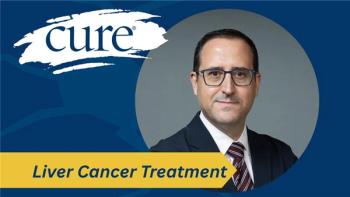
The First Step Toward Preventing Liver Cancer Is Being Aware of the Precursors to its Development
In the spring 2020 issue of CURE®, Editor-in-Chief Dr. Debu Tripathy details how preventing liver cancer starts with understanding the precursors to cancer’s development.
Many cancer types develop in a seemingly random and mysterious manner, with no connection to obvious risk factors, leaving patients wondering if they developed the disease because of something they did — or didn’t do.
On the other end of the spectrum is liver cancer. Although some cases arise without any apparent precursors, many are linked to some insult to the liver. These include past or ongoing hepatitis infection, significant use of alcohol and, increasingly, nonalcoholic fatty liver disease (NAFLD), which tends to be associated with obesity. The common element in these factors is that they lead to inflammation and fibrosis (scarring) of the liver, which raises the risk of cancer.
It might sound ominous that 25% of Americans have NAFLD, but the good news is that the condition is a modifiable risk factor for liver cancer: It appears to be reversible through dietary changes and exercise. This means that, in many cases, prevention of liver cancer may be in the hands of patients— and not only those who know they have NAFLD. By losing weight when a doctor recommends it, patients may well reverse a case of fatty liver they didn’t know they had, potentially averting cancer.
Still, it’s ideal to know whether NAFLD is present so that patients can change their lifestyles with purpose and doctors can monitor their progress. This requires some investigation because the condition is typically “silent,” causing no symptoms. In particular, it’s reasonable for doctors to consider testing blood for elevated liver enzymes in patients who are overweight, have symptoms of liver disease, have type 2 diabetes, drink alcohol regularly or have been exposed to hepatitis.
Other less common diseases cause fibrosis or the more advanced condition of cirrhosis, and these patients are also at risk of liver cancer. Finally, a smaller group of patients have inherited genetic mutations that predispose them to NAFLD, so those with a family history of that condition or liver cancer should ask their doctors about getting evaluated.
When doctors find that a patient’s liver enzymes are elevated, their follow-up likely will include additional blood tests and imaging. Although CT scanning is an option after causes such as hepatitis have been ruled out, a new approach is FibroScan, a specialized ultrasound device that vibrates the liver to measure stiffness due to scar tissue.
Patients and doctors should keep NAFLD in front of mind, because we may have seen just the beginning of its upward trend. Although the obesity epidemic may finally be tapering off, we can expect its long-term effects to remain. That certainly seems true when we consider that NAFLD is now the fastest-rising cause of liver cancer in Western countries.
The first step toward controlling the incidence of NAFLD is making people aware of it, an effort that should be undertaken by public health outlets, primary care physicians, oncologists and patients. It’s up to everyone individually to take stock of personal health issues and, if risk factors are present, ask about screening. With members of the public aware and advocating for themselves, we may reduce the incidence of both NAFLD and liver cancer.




